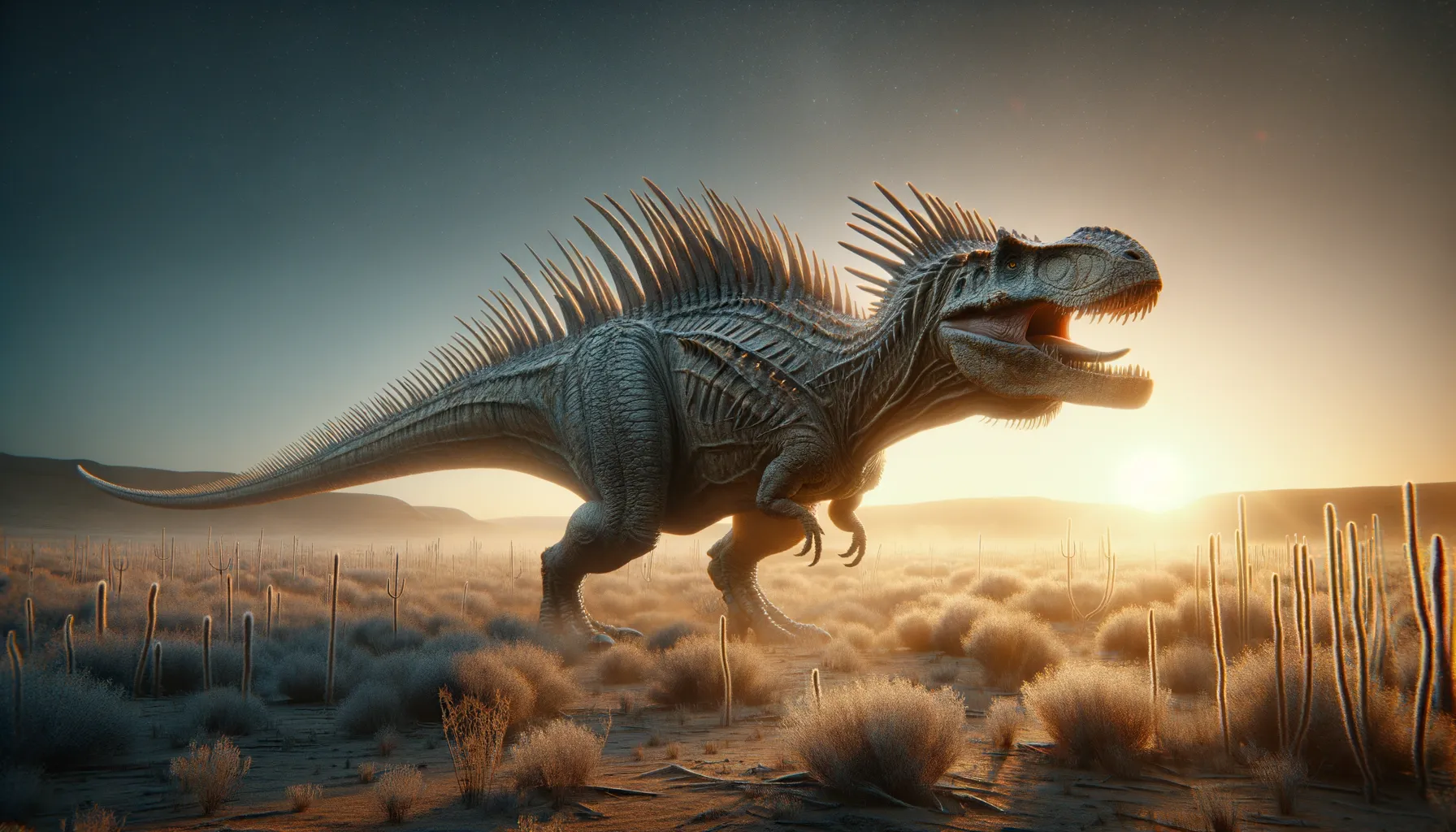
Euoplocephalus
Armored defender of the Cretaceous landscape!
Period
Cretaceous
Length
Around 6 meters long.
Height
Approximately 2 meters tall at the hips.
Weight
About 2 metric tons.
Euoplocephalus was a heavily armored dinosaur known for its tank-like body covered in bony plates, spikes, and a clubbed tail. It roamed the land during the Late Cretaceous period, primarily in what is now North America. This herbivorous dinosaur is one of the best-known ankylosaurids, thanks to its distinctive anatomical features and well-preserved fossils that have provided deep insights into its way of life.
Diet
Euoplocephalus was a herbivore, consuming a variety of low-lying plants and vegetation. Its beak-like mouth helped it strip plants effectively, and it likely fed on ferns, cycads, and other prehistoric flora.
Hunting
As a herbivore, Euoplocephalus did not engage in hunting. It relied on its sturdy build and armored body to deter predators and gather its plant-based food.
Environmental challenges
Euoplocephalus faced challenges from predators like tyrannosaurs and dromaeosaurs. Its armor and tail club were key defenses against such threats. It lived in an ever-changing environment where food resources could vary, demanding adaptability in feeding patterns.
Speed
Slow-moving due to its heavy armored body.
Lifespan
Estimated to be around 20 to 30 years.
First discovery
Discovered in Alberta, Canada, in 1897 by Lawrence Lambe.
Fun Facts
- Euoplocephalus was an armored dinosaur known for its heavily plated body and formidable tail club.
- This dinosaur lived about 76 to 74 million years ago during the Late Cretaceous period.
- Its name means 'well-armored head', highlighting its sturdy skull protection.
- Euoplocephalus was a herbivore, likely feeding on low-lying plants and vegetation.
- It was approximately 20 feet long, making it one of the largest ankylosaurids.
- More than 40 specimens of Euoplocephalus have been discovered, providing a wealth of information about this dinosaur.
- Euoplocephalus had small spikes along its back and sides, providing extra defense against predators.
Growth and Development
Euoplocephalus hatched from eggs and went through several growth stages to reach adulthood. Juveniles likely had less developed armor, growing thicker as they aged for protection. These stages were crucial for learning survival skills in their Cretaceous ecosystems.
Habitat
Euoplocephalus inhabited forested regions and floodplains, thriving in diverse Cretaceous landscapes. The presence of flowering plants added variety to its diet. This environment provided shelter and abundant vegetation while supporting a complex ecosystem with numerous dinosaur species.
Interaction with other species
Euoplocephalus lived among a variety of other dinosaurs, both herbivorous and carnivorous. While it likely had little interaction with predators due to its defenses, it may have shared territories with other herbivores, competing for plant resources.
Natural lifespan
Euoplocephalus's natural lifespan was likely similar to other large herbivorous dinosaurs, spanning a few decades.
Reproduction
Euoplocephalus reproduced by laying eggs, likely in nests. Females may have selected secluded areas for nesting to keep eggs safe from predators. Hatchlings would have been relatively independent, needing to quickly learn to navigate their environment.
Social behaviour
Euoplocephalus might have shown some herd behavior, moving in groups to increase safety from predators. Communication through visual or audible signs could have helped maintain group cohesion. However, specific behaviors remain speculative due to limited direct fossil evidence.
Fossil locations
Key fossils of Euoplocephalus have been found predominantly in the Dinosaur Park Formation in Alberta, Canada. These well-preserved specimens offer insights into its physical structure and habitat. Additional finds across North America support its widespread presence during the Late Cretaceous.
